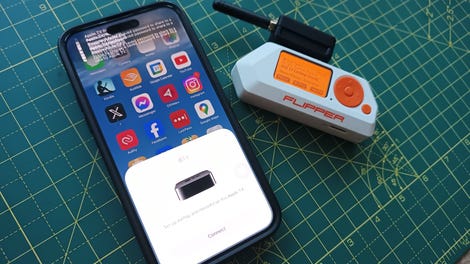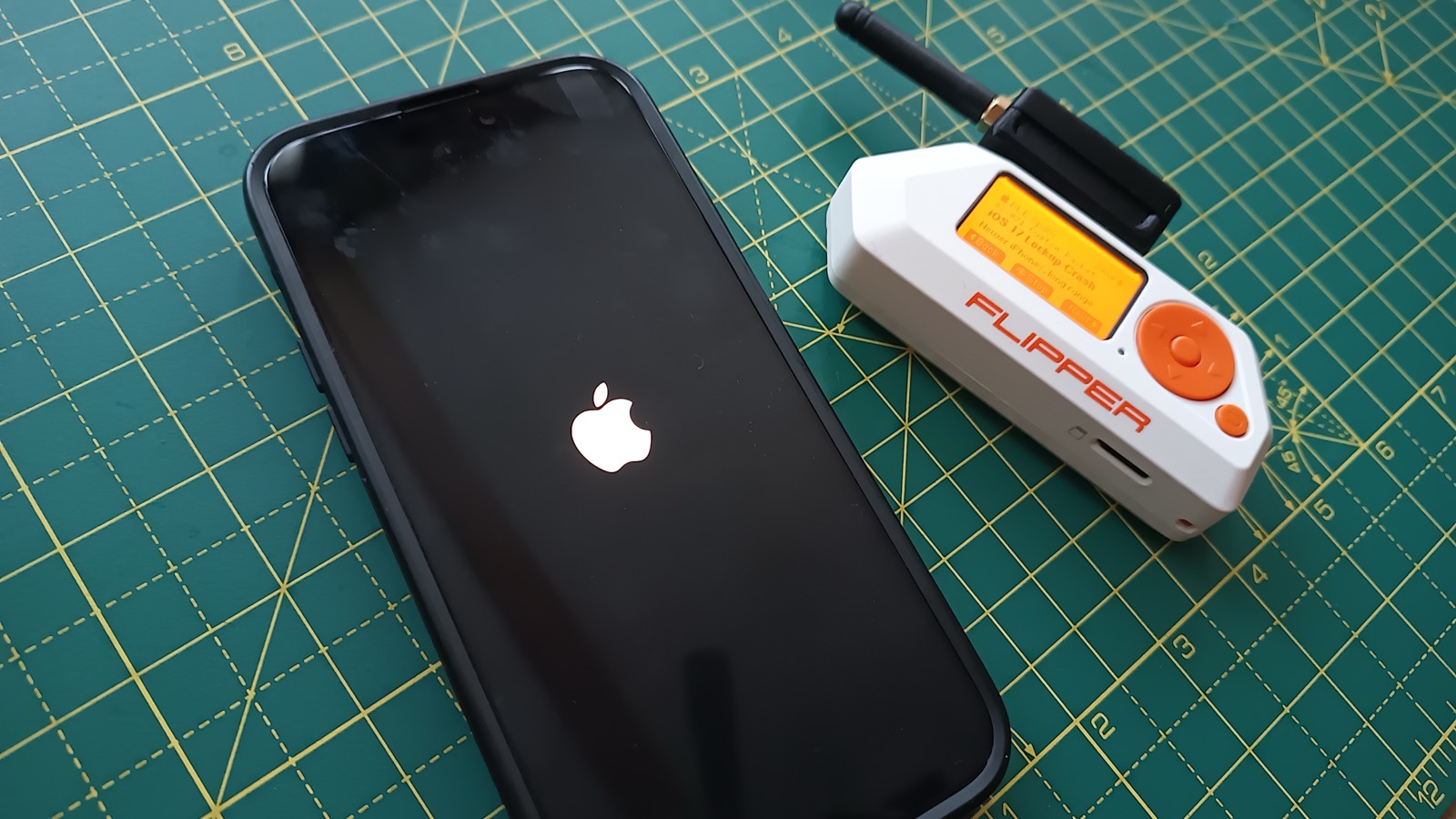My iPhone 14 Pro Max running iOS 17.1 crashed in less than three minutes following an attack carried out with a Flipper Zero. Adrian Kingsley-Hughes/ZDNET
All eyes are on iOS 17.1, which fixes a range of iPhone issues, from overheating issues to the odd screen burn-in issue to the more obscure iPhone bug. nightly restart. But there is one problem that I have been asked about the most, and which is not resolved.
Can you still crash an iPhone with a Flipper Zero? Ummm, yes.
The image above may make it look like the Flipper Zero needs to be placed right next to the iPhone to block it. But this is not the case. While taking this photo, I also inadvertently crashed my iPad Pro which was in another room.
An effective attack within a radius of 6 to 9 meters
I actually tested the range of this attack and found it to be effective within 20-30 feet.
It takes about three minutes for an iPhone to reboot after a Flipper Zero BLE Spam lockup crash attack (which requires third-party software to be loaded onto the Flipper Zero). However, before three minutes, the device may no longer respond to touch commands and other Bluetooth devices connected to iPhone may be forced to disconnect and reconnect.
The Flipper Zero attack is not dangerous in terms of hardware damage or delivery of a malicious payload. But it is annoying that the iPhone becomes unresponsive.

A Flipper Zero attack (BLE Spam lockup crash) is not dangerous in terms of damaging hardware or delivering a malicious payload, but it is annoying when the iPhone becomes unresponsive. Adrian Kingsley-Hughes/ZDNET
How to avoid the attack?
It is important to note that while Flipper Zero does not drop malware on the iPhone and cause permanent damage, it is a frustrating DoS (denial of service) attack that can inconvenience the user and make him believe that his iPhone is defective.
What is your defense? The only defense I can offer is this.
If you notice your iPhone doing something strange, turn off Bluetooth – which you can do in two ways.
- The first is to go to Control Center and turn it off. (With this method, Bluetooth only remains disabled until the next day.)
- Or, go to Settings > Bluetooth and toggle the button there.
Then restart the device, as my testing suggests that iPhones become a little unstable after this and benefit from a restart.
To go further on the Flipper Zero
Source: “ZDNet.com”
